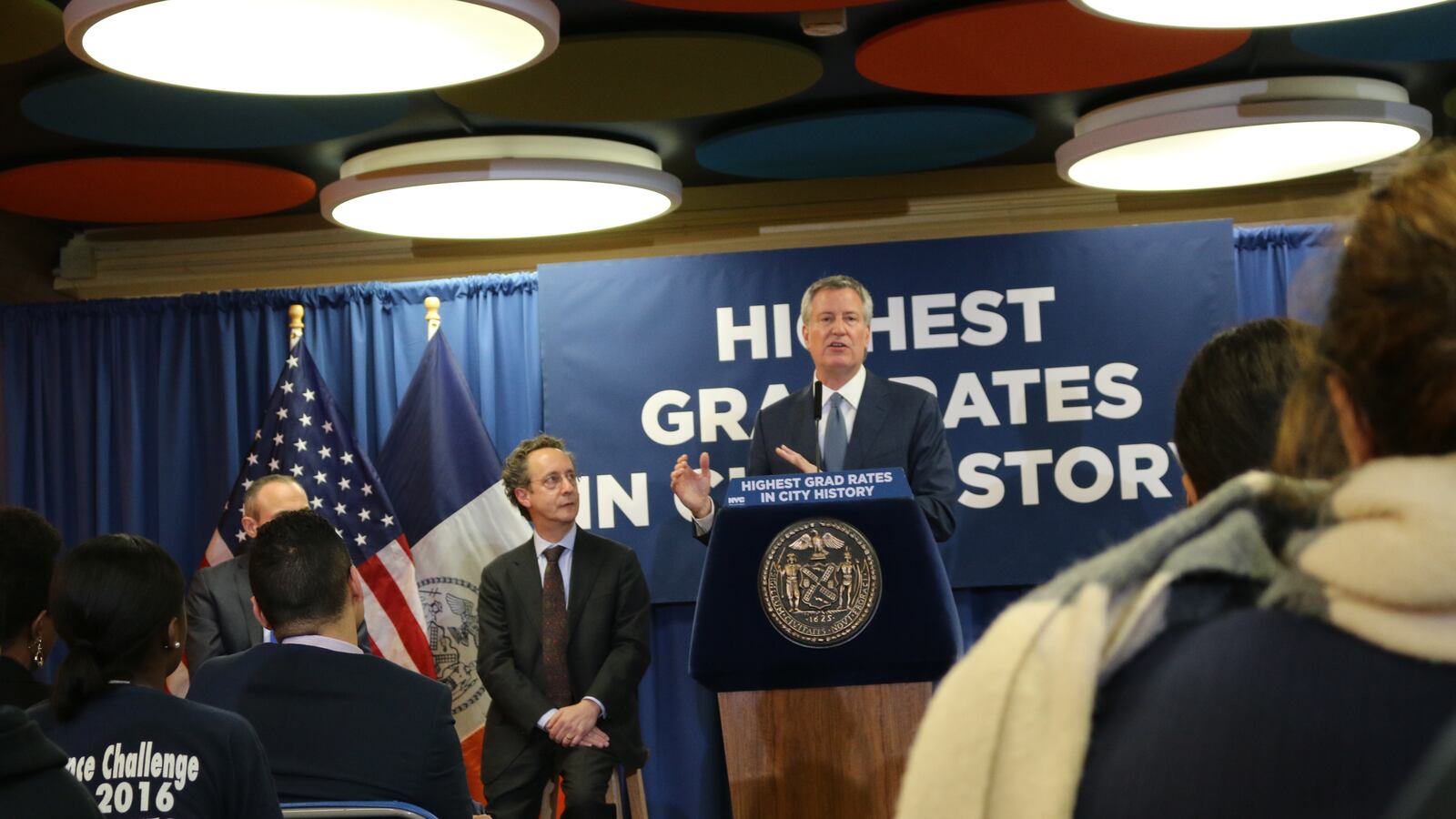New York City’s graduation rate rose to 74.3 percent in 2017, a slight increase over the previous year and a new high for the city.
The 1.2 percentage point increase over the previous year continues an upward climb for the city, where the overall graduation rate has grown by nearly 28 points since 2005. The state graduation rate also hit a new high — 82.1 percent — just under the U.S. rate of 84.1 percent.
The city’s dropout rate fell to 7.8 percent, a small decline from the previous year and the lowest rate on record, according to the city.
“New York City is showing that when we invest in our students, they rise to the challenge and do better and better,” Mayor Bill de Blasio said in a statement Wednesday.
More graduates were also deemed ready for college-level work. Last year, 64 percent of graduates earned test scores that met the City University of New York’s “college-ready” benchmark — up more than 13 percentage points from the previous year.
However, the gains came after CUNY eased its readiness requirements; without that change, city officials said the increase would be significantly smaller. But even with the less rigorous requirements, more than a third of city students who earned high-school diplomas would be required to take remedial classes at CUNY.
Phil Weinberg, the education department’s deputy chancellor for teaching and learning, noted that CUNY’s college-readiness requirements are more demanding than New York’s graduation standards — which are among the toughest in the country.
“We will work toward making sure none of our students need remediation when they get to college,” he told reporters. “But that’s a long game for us and we continue to move in that direction.”
The rising graduation rates follow a series of changes the state has made in recent years to help more students earn diplomas.
The graduation-requirement changes include allowing students with disabilities to earn a diploma by passing fewer exit exams and letting more students appeal a failed score. In addition, students can now substitute a work-readiness credential for one of the five Regents exams they must pass in order to graduate — adding to a number of other alternative tests the state has made available in the past few years.
About 9,900 students used one of those alternative-test or credential options in 2017, while 315 students with disabilities took advantage of the new option for them, according to state officials. They could not say how many students successfully appealed a low test score; but in 2016, about 1,300 New York City students did so.
The news was mixed for schools in de Blasio’s high-profile “Renewal” improvement program for low-performing schools. Among the 28 high schools that have received new social services and academic support through the program, the graduation rate increased to nearly 66 percent — almost a 6 percentage point bump over 2016. Their dropout rate also fell by about 2 points, to 16.4 percent, though that remains more than twice as high as the citywide rate.
However, more than half of the high schools in that $568 million program — 19 out of 28 — missed the graduation goals the city set for them, according to a New York Times analysis based on preliminary figures.
Graduation rates for students who are still learning English ticked up slightly to 32.5 percent, following a sharp decline the previous year that the state education commissioner called “disturbing.” City officials argue that students who improved enough to shed the designation of “English language learner” in the years before they graduated should also be counted; among that larger group, the graduation rate was 53 percent in 2017.
Meanwhile, the graduation-rate gap between white students and their black and Hispanic peers narrowed a smidgen, but it remains wide. Last year, the graduation rate was about 83 percent for white students, 70 percent for black students, and 68 percent for Hispanic students. That represented a closing of the gap between white and black students by 0.4 percentage points, and 0.1 points between whites and Hispanic.
Asian students had the highest rate — 87.5 percent — a nearly 2 point increase from the previous year that widened their lead over other racial groups.
Christina Veiga contributed reporting.

